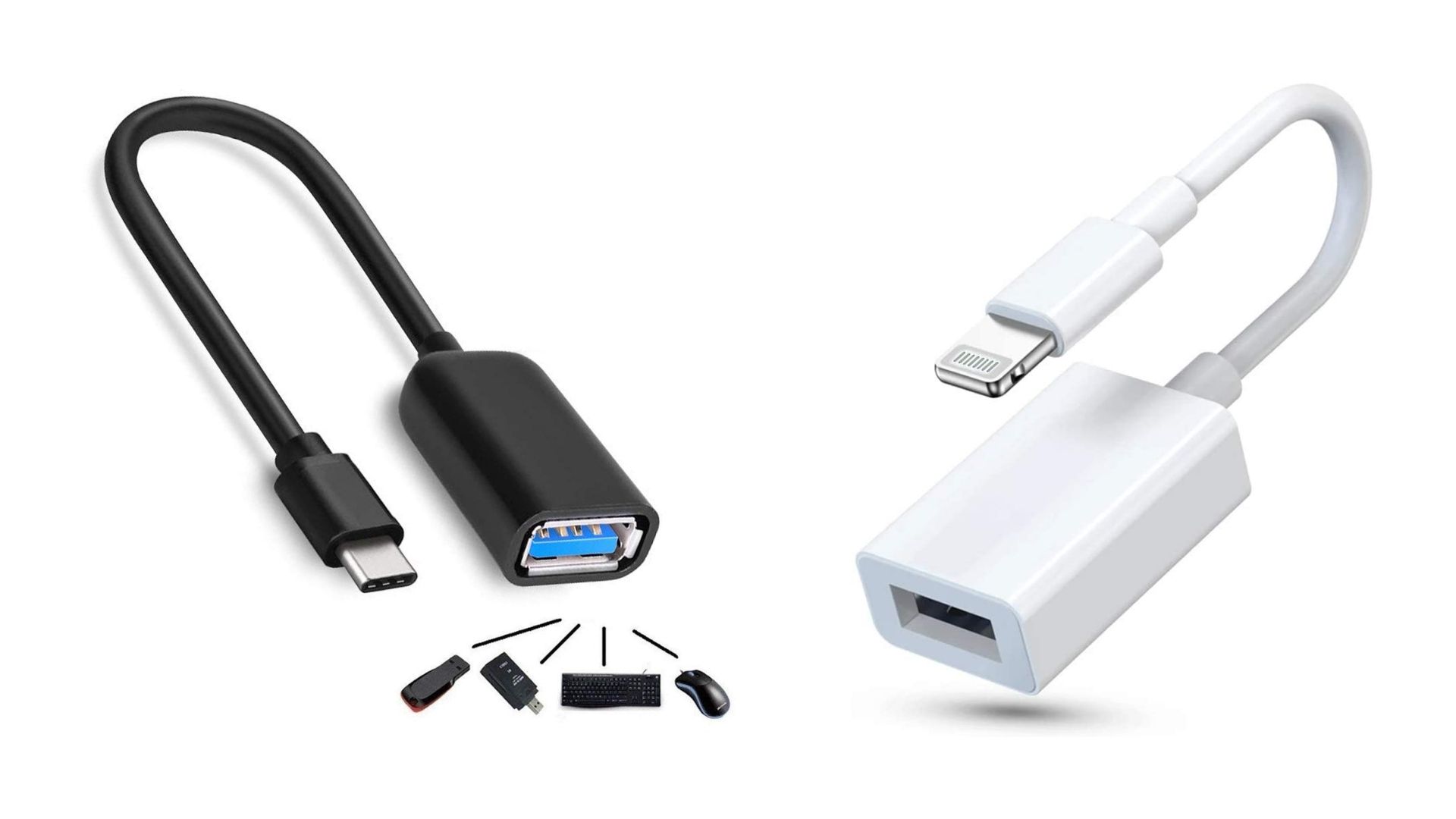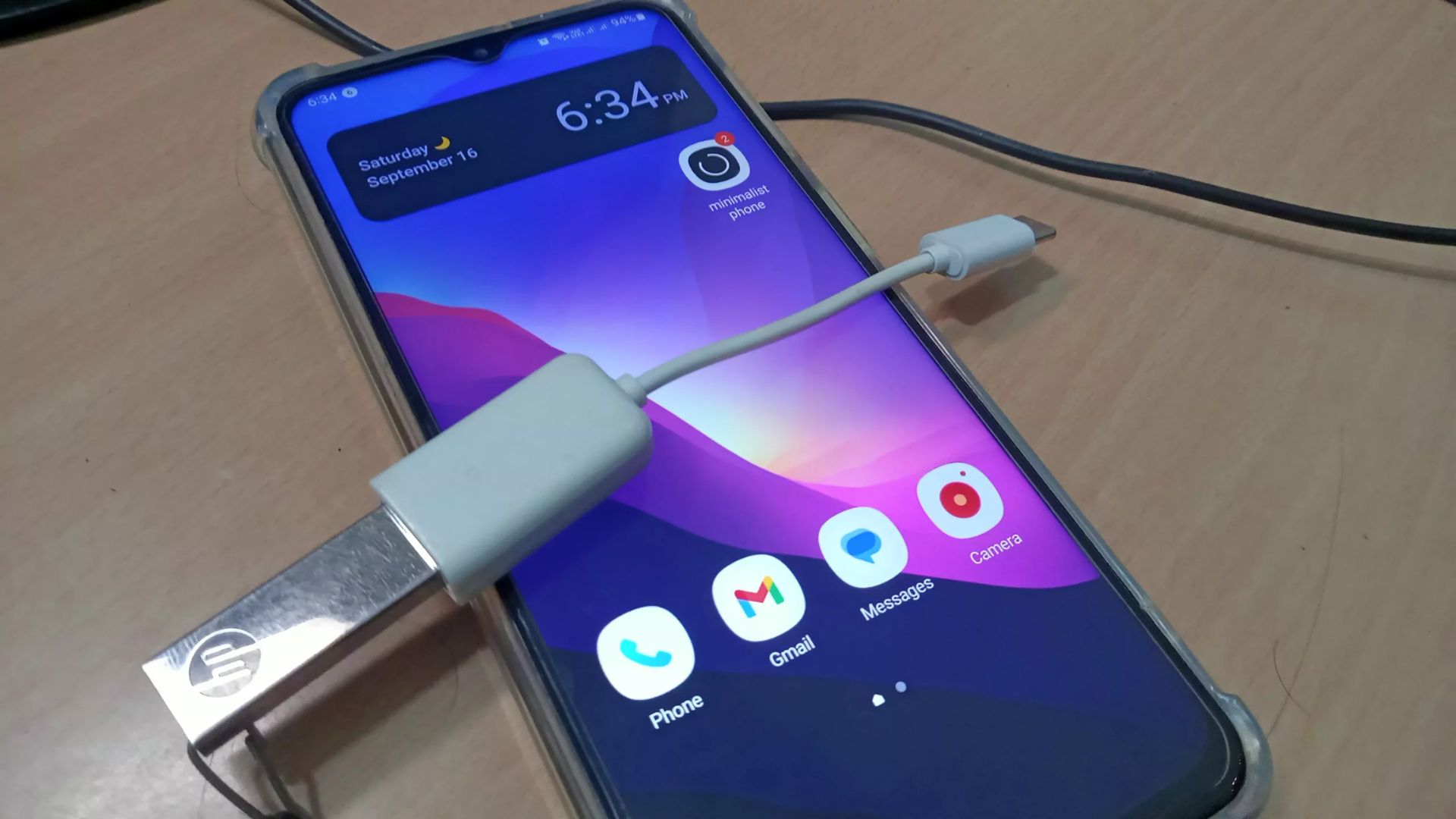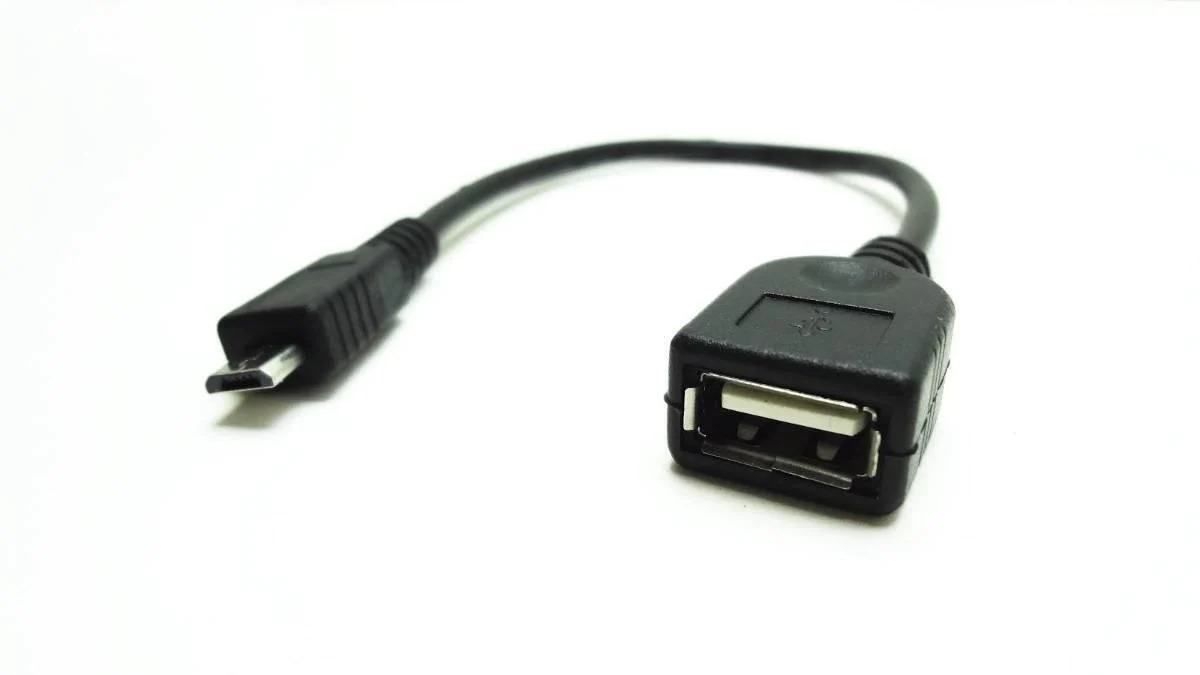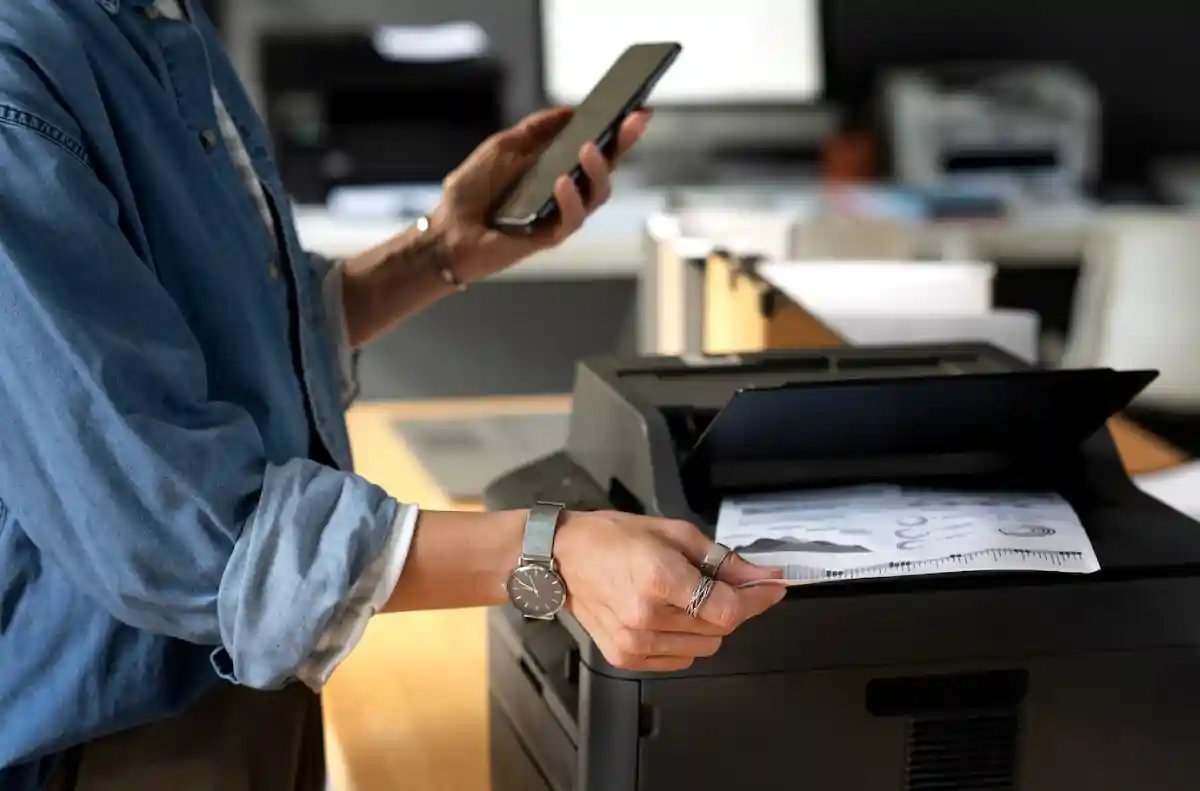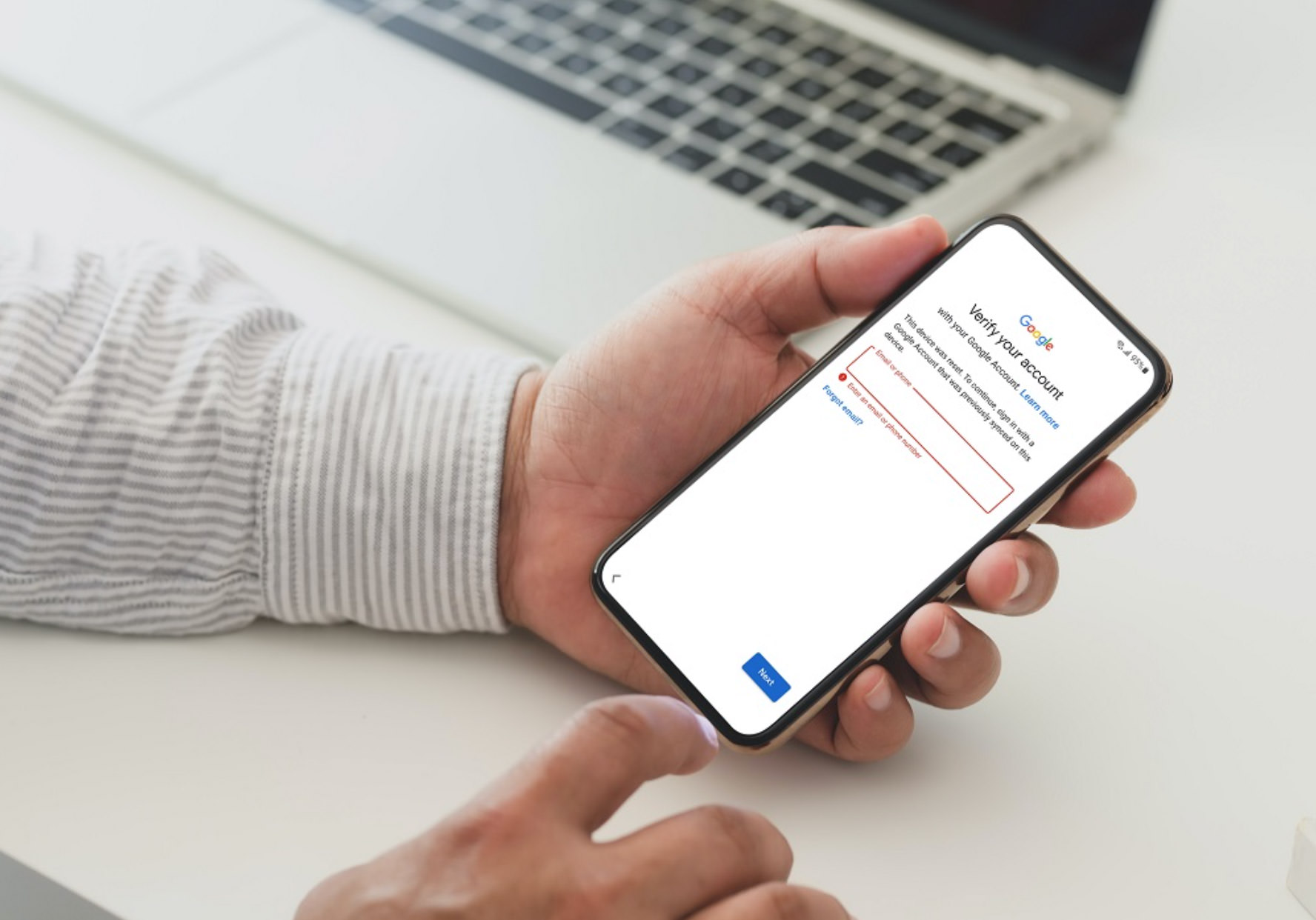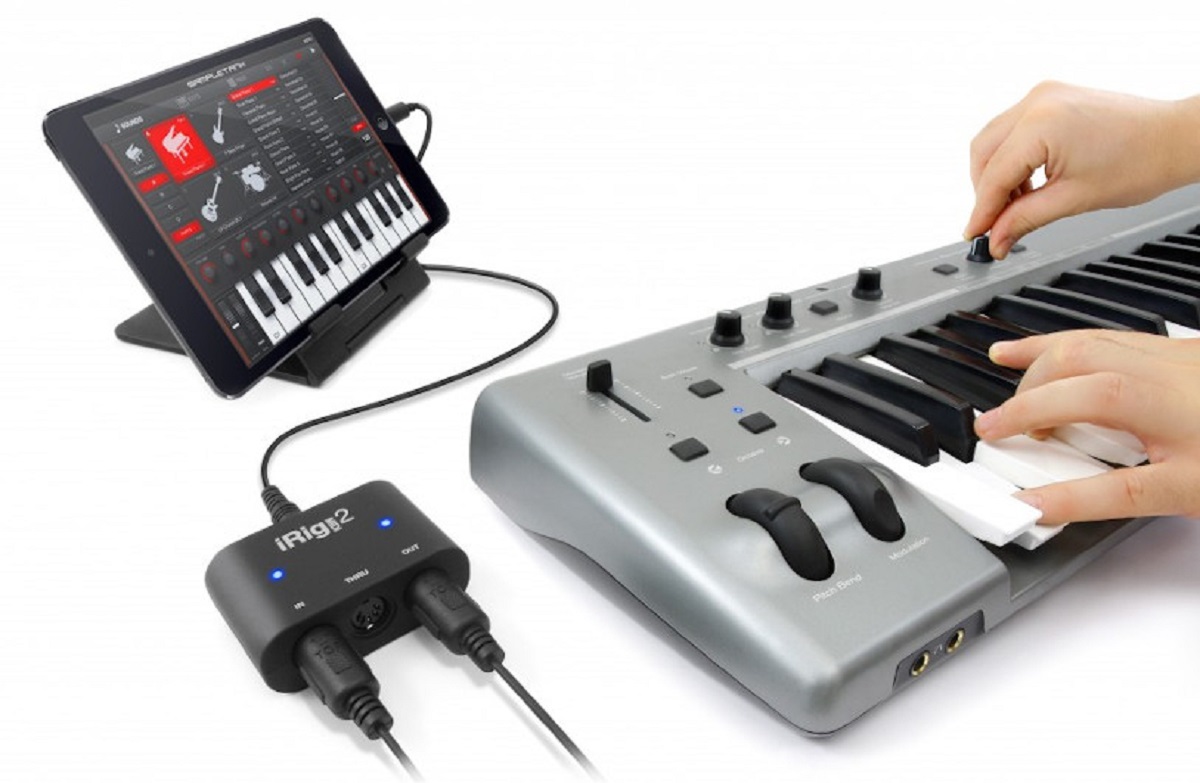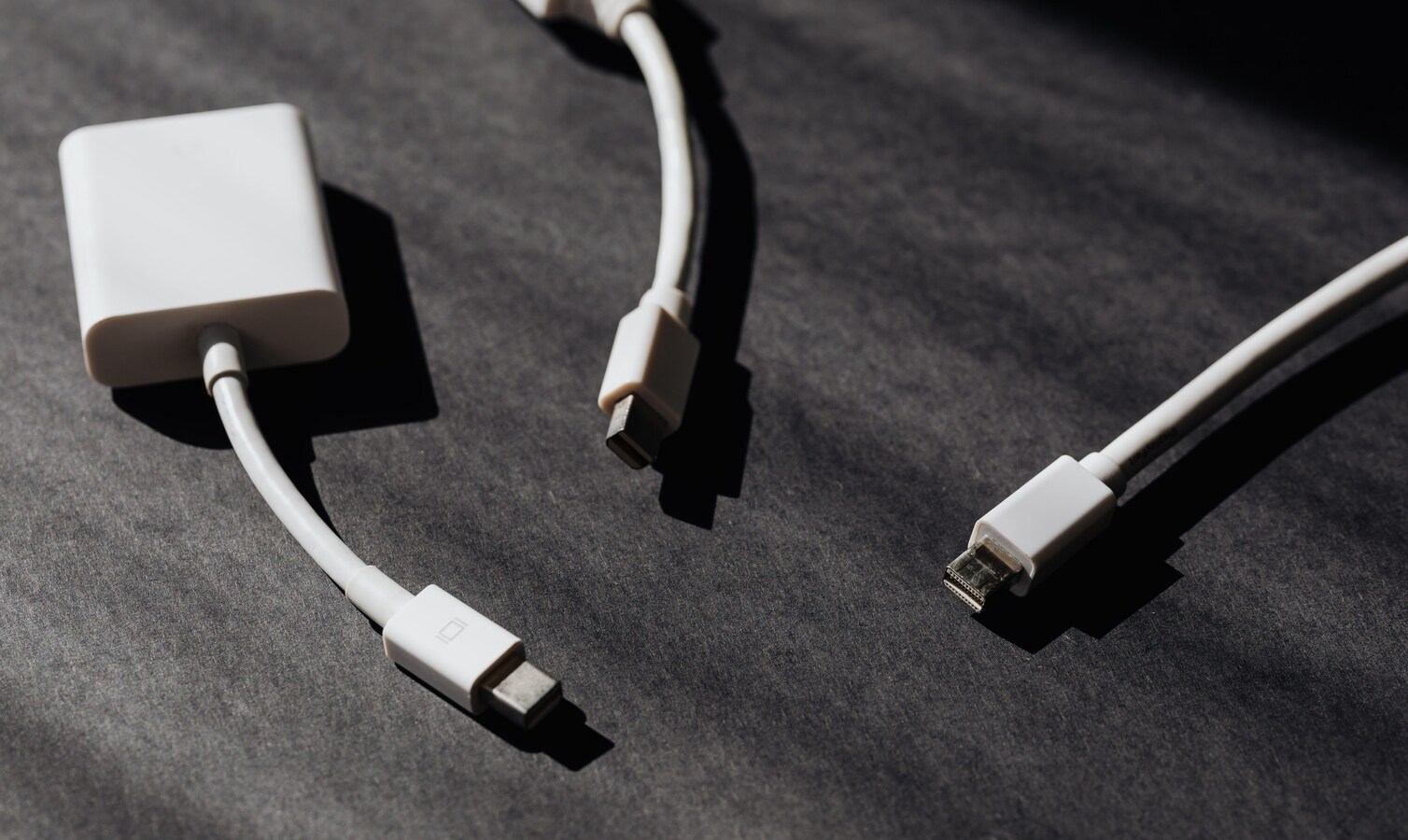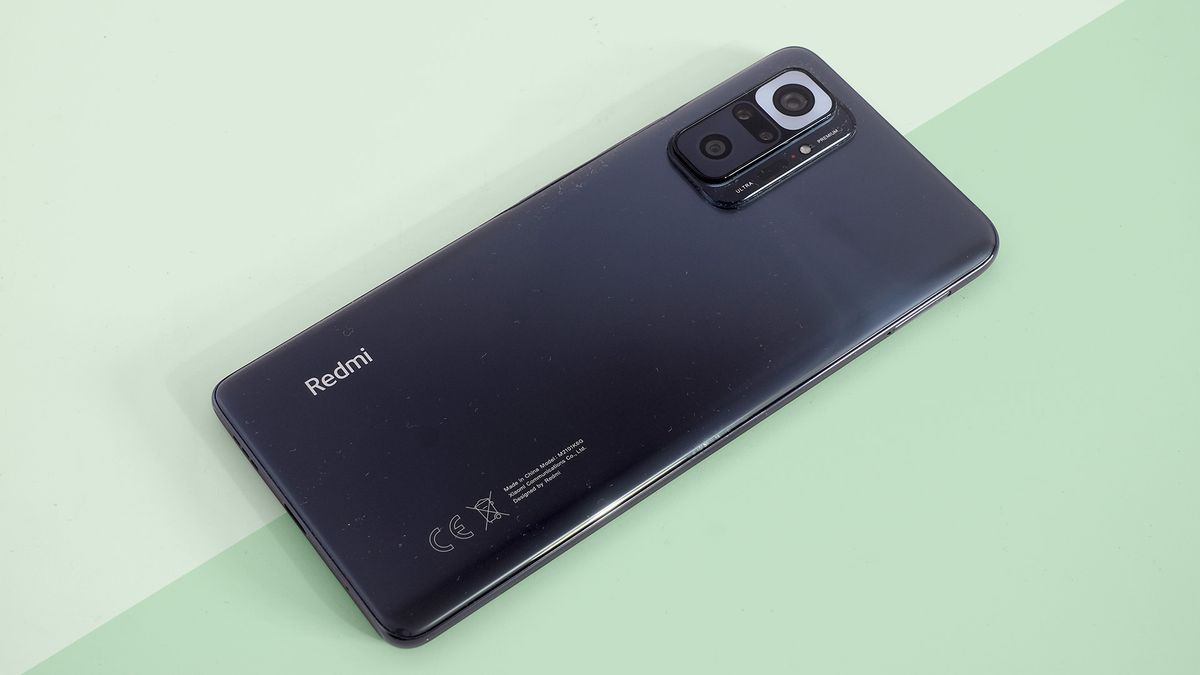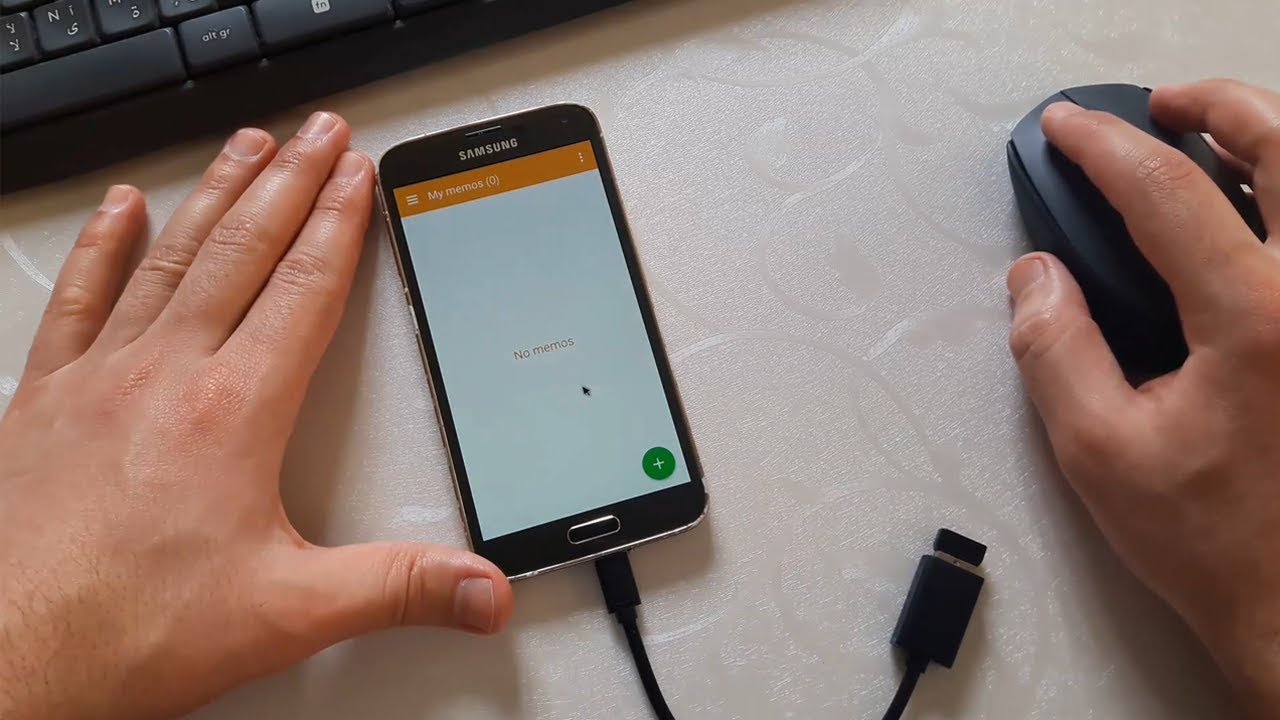Introduction
In the ever-evolving world of mobile devices, the demand for enhanced functionality and versatility continues to grow. With the increasing reliance on smartphones and tablets for a wide range of tasks, the need for seamless connectivity and expanded capabilities has become paramount. This is where USB On-The-Go (OTG) cables come into play, offering a convenient solution for bridging the gap between different devices and expanding the functionality of mobile gadgets.
As the digital landscape continues to flourish, the significance of USB OTG cables cannot be overstated. These innovative cables enable users to connect a myriad of external devices, such as USB flash drives, keyboards, mice, and even game controllers, to their smartphones and tablets. This facilitates a seamless transfer of data, expands the device's storage capacity, and provides a platform for enhanced productivity and entertainment.
The versatility of USB OTG cables has revolutionized the way we interact with our mobile devices. Gone are the days when smartphones and tablets were limited to their internal storage and a handful of compatible peripherals. With USB OTG, users can now effortlessly connect a wide array of USB-enabled accessories, thereby unlocking a world of possibilities and elevating the overall user experience.
In this comprehensive guide, we will delve into the intricacies of USB OTG cables, exploring their functionality, compatibility with different devices, and the advantages and disadvantages they bring to the table. By gaining a deeper understanding of USB OTG, readers will be empowered to harness the full potential of their mobile devices and leverage the myriad benefits that these cables offer. So, let's embark on this enlightening journey into the realm of USB OTG and unlock the boundless opportunities it presents.
What is USB OTG?
USB OTG, which stands for USB On-The-Go, is a remarkable technology that empowers mobile devices to function as USB hosts. In essence, this means that smartphones and tablets equipped with USB OTG support can act as a hub for connecting and communicating with a wide range of USB peripherals. This capability effectively transforms mobile devices into versatile and dynamic tools that extend beyond their traditional functionalities.
Unlike conventional USB connections, where one device typically serves as the host while the other functions as a peripheral, USB OTG introduces a new level of flexibility. With USB OTG, a mobile device can seamlessly switch between being a host and a peripheral, depending on the specific requirements of the connection. This bidirectional communication capability is a game-changer, as it enables users to connect various USB accessories directly to their mobile devices without the need for a computer or additional adapters.
At its core, USB OTG facilitates a seamless and intuitive way to expand the capabilities of smartphones and tablets. It allows users to connect USB flash drives to transfer files, link up external keyboards and mice for enhanced productivity, and even attach game controllers for a more immersive gaming experience. Furthermore, USB OTG paves the way for connecting digital cameras, printers, and other USB-enabled devices, thereby broadening the scope of what mobile devices can accomplish.
In summary, USB OTG serves as a bridge between the world of mobile devices and the vast ecosystem of USB peripherals. By embracing this technology, users can unlock a wealth of possibilities and elevate the functionality of their smartphones and tablets to unprecedented levels. The sheer versatility and convenience offered by USB OTG make it an indispensable feature for modern mobile devices, empowering users to seamlessly integrate a myriad of USB accessories into their digital lifestyles.
How does USB OTG work?
USB OTG operates on a sophisticated protocol that enables mobile devices to establish seamless connections with a diverse range of USB peripherals. At the heart of this functionality lies the concept of dual-role devices, which are capable of assuming the roles of both USB host and USB peripheral. This bidirectional capability is the key to understanding how USB OTG works and how it facilitates the seamless integration of USB accessories with mobile devices.
When a USB OTG cable is used to connect a mobile device to a USB peripheral, such as a flash drive or a keyboard, the device undergoes a process known as role swapping. This mechanism allows the mobile device to dynamically switch its role from a peripheral to a host, thereby enabling it to communicate with the connected USB accessory. This seamless transition is made possible by the presence of an OTG transceiver within the mobile device, which facilitates the negotiation and switching of roles as needed.
Moreover, USB OTG cables are designed with a unique pin configuration that distinguishes them from standard USB cables. These cables feature a micro-USB connector on one end, which is compatible with most mobile devices, and a standard USB connector on the other end, allowing for the attachment of various USB peripherals. This specialized design ensures that the USB OTG cable can effectively facilitate the bidirectional communication required for role swapping and seamless connectivity.
Furthermore, the implementation of USB OTG is complemented by the support for USB On-The-Go detection within mobile devices. This detection mechanism enables the device to recognize when a USB OTG cable is connected and initiate the necessary protocols to enable the host or peripheral functionality, depending on the specific requirements of the connection. This intelligent detection process ensures that the mobile device can adapt to the presence of USB peripherals and seamlessly accommodate their connectivity.
In essence, the intricate workings of USB OTG revolve around the seamless transition between host and peripheral roles, facilitated by the specialized design of USB OTG cables and the intelligent detection mechanisms within mobile devices. This harmonious interplay of technology empowers users to effortlessly connect a diverse array of USB peripherals to their smartphones and tablets, thereby expanding the functionality and versatility of their mobile devices to unprecedented levels.
Types of USB OTG cables
When it comes to USB On-The-Go (OTG) cables, there are several types available, each designed to cater to specific connectivity needs and device configurations. Understanding the different types of USB OTG cables is crucial for users seeking to harness the full potential of their mobile devices and seamlessly integrate a diverse range of USB peripherals. Let's explore the various types of USB OTG cables and their unique characteristics:
-
Micro-USB to USB-A OTG Cable: This type of USB OTG cable features a micro-USB connector on one end, compatible with most smartphones and tablets, and a USB-A connector on the other end, allowing for the connection of standard USB peripherals. It is widely used for linking devices such as USB flash drives, keyboards, mice, and game controllers to mobile devices with micro-USB ports.
-
USB-C to USB-A OTG Cable: With the increasing prevalence of USB-C ports in modern smartphones and tablets, USB-C to USB-A OTG cables have gained prominence. These cables sport a USB-C connector on one end and a USB-A connector on the other, enabling seamless connectivity between USB-C devices and standard USB peripherals.
-
Micro-USB to USB-C OTG Adapter: As the mobile industry transitions towards USB-C as the standard interface, micro-USB to USB-C OTG adapters have emerged to facilitate compatibility between devices with different port types. These adapters allow users to connect USB-C peripherals to devices with micro-USB ports, expanding the range of accessories that can be seamlessly integrated.
-
USB-C to USB-C OTG Cable: Designed for devices equipped with USB-C ports, USB-C to USB-C OTG cables enable direct connectivity between USB-C peripherals and compatible smartphones and tablets. This type of cable eliminates the need for adapters and offers a straightforward solution for expanding the functionality of USB-C devices.
-
Lightning to USB OTG Adapter (for iOS Devices): Catering to the connectivity needs of iOS devices, Lightning to USB OTG adapters provide a means to connect USB peripherals, including cameras, MIDI controllers, and audio interfaces, to iPhones and iPads equipped with Lightning ports. This adapter opens up a world of creative possibilities for iOS users, enabling seamless integration with a diverse range of USB accessories.
By understanding the distinct characteristics and applications of these various USB OTG cables and adapters, users can make informed decisions regarding the most suitable connectivity solutions for their specific devices and peripheral requirements. The availability of these diverse cable types ensures that mobile device users can seamlessly integrate an extensive array of USB peripherals, thereby maximizing the potential of their smartphones and tablets.
Compatibility with devices
USB On-The-Go (OTG) technology has significantly expanded the compatibility of mobile devices with a wide range of USB peripherals. By supporting USB OTG functionality, smartphones and tablets have transcended their traditional limitations, becoming versatile hubs capable of seamlessly interacting with diverse USB accessories. The compatibility of USB OTG extends to various devices, including but not limited to smartphones, tablets, digital cameras, gaming consoles, and audio interfaces.
Smartphones and Tablets:
Modern smartphones and tablets equipped with USB OTG support can effortlessly connect to an array of USB peripherals. Whether it's expanding storage with USB flash drives, enhancing productivity with external keyboards and mice, or enjoying immersive gaming experiences with game controllers, USB OTG compatibility empowers users to leverage the full potential of their mobile devices. Furthermore, the compatibility of USB OTG extends to facilitating the connection of digital cameras for direct photo transfers and printers for convenient on-the-go printing.
Digital Cameras:
USB OTG compatibility enables seamless connectivity between digital cameras and mobile devices. This functionality allows users to directly transfer photos and videos from their cameras to their smartphones or tablets, streamlining the process of sharing and editing captured media. Additionally, the compatibility with digital cameras extends to supporting remote camera control and live view functionalities, enhancing the creative capabilities of photographers and content creators.
Gaming Consoles:
With USB OTG compatibility, mobile gamers can elevate their gaming experiences by connecting game controllers to their smartphones and tablets. This seamless connectivity enables users to enjoy console-like gaming experiences on their mobile devices, complete with responsive controls and enhanced gameplay immersion. The compatibility of USB OTG with gaming consoles extends to supporting a wide range of game controllers, including joysticks, gamepads, and steering wheels, catering to diverse gaming preferences.
Audio Interfaces:
For musicians and audio enthusiasts, USB OTG compatibility opens up a world of possibilities by facilitating the connection of audio interfaces to mobile devices. This compatibility enables seamless integration with MIDI controllers, audio mixers, and external sound cards, empowering users to engage in music production, recording, and live performances directly from their smartphones or tablets. The compatibility with audio interfaces enhances the creative potential of mobile devices, transforming them into powerful tools for audio production and performance.
In essence, the compatibility of USB OTG with various devices underscores its transformative impact on the functionality and versatility of mobile gadgets. By seamlessly integrating with smartphones, tablets, digital cameras, gaming consoles, and audio interfaces, USB OTG empowers users to unlock a wealth of possibilities and elevate their digital experiences to unprecedented levels.
Advantages of using USB OTG cables
USB On-The-Go (OTG) cables offer a myriad of advantages that significantly enhance the functionality and versatility of mobile devices. These advantages have reshaped the way users interact with their smartphones and tablets, unlocking a wealth of possibilities and streamlining various tasks. Let's delve into the compelling advantages of using USB OTG cables:
-
Expanded Storage Capacity: One of the most notable advantages of USB OTG cables is the ability to expand the storage capacity of mobile devices. By connecting USB flash drives or external hard drives via USB OTG, users can seamlessly access additional storage space for storing multimedia files, documents, and backups. This feature is particularly valuable for individuals who require extra storage for their extensive media libraries, work-related files, or large applications.
-
Seamless File Transfer: USB OTG cables facilitate effortless file transfers between mobile devices and USB peripherals. Whether it's transferring photos from a digital camera, sharing documents with colleagues using a USB flash drive, or backing up important files to an external hard drive, the seamless file transfer capability of USB OTG streamlines data management tasks, eliminating the need for complex wireless transfer methods.
-
Enhanced Productivity: The integration of external keyboards and mice via USB OTG empowers users to enhance their productivity on smartphones and tablets. This advantage is particularly beneficial for individuals who engage in extensive typing tasks, such as writing documents or responding to emails, as well as for those who seek precise cursor control for intricate tasks. The ability to seamlessly connect input devices transforms mobile devices into versatile productivity tools.
-
Immersive Gaming Experiences: Gaming enthusiasts benefit from the advantages of USB OTG cables by connecting game controllers to their smartphones and tablets. This capability enables users to enjoy immersive gaming experiences with responsive controls, elevating mobile gaming to new heights. Whether it's playing action-packed games or engaging in multiplayer competitions, the seamless integration of game controllers enhances the overall gaming experience.
-
On-The-Go Printing: USB OTG compatibility with printers facilitates convenient on-the-go printing directly from mobile devices. Users can effortlessly connect their smartphones or tablets to compatible printers, enabling quick and hassle-free printing of documents, photos, and other materials. This advantage is particularly valuable for professionals who require immediate access to printed materials during their work-related activities.
-
Versatile Peripheral Connectivity: The versatility of USB OTG cables extends to supporting a wide range of USB peripherals, including audio interfaces, MIDI controllers, and external storage devices. This compatibility empowers users to explore diverse creative and productivity-enhancing accessories, fostering a dynamic ecosystem of peripheral connectivity that amplifies the potential of mobile devices.
In summary, the advantages of using USB OTG cables encompass expanded storage capacity, seamless file transfer, enhanced productivity, immersive gaming experiences, on-the-go printing, and versatile peripheral connectivity. These advantages collectively contribute to the transformation of smartphones and tablets into multifaceted tools that cater to a broad spectrum of user needs, ultimately elevating the overall user experience and productivity.
Disadvantages of using USB OTG cables
While USB On-The-Go (OTG) cables offer a multitude of advantages, it is important to acknowledge the potential disadvantages associated with their usage. Understanding these drawbacks can provide users with a comprehensive perspective on the practical implications of integrating USB OTG cables into their mobile device experiences.
-
Power Consumption: When connecting certain USB peripherals to mobile devices via USB OTG, there may be an increased power demand. This can potentially lead to accelerated battery drain, particularly when utilizing power-hungry accessories such as external hard drives or high-performance audio interfaces. Users should be mindful of power consumption considerations when employing USB OTG cables for extended periods, especially in scenarios where battery life is a critical concern.
-
Physical Compatibility: The physical dimensions and form factors of USB peripherals vary widely, and some accessories may not be optimally suited for direct connectivity to mobile devices via USB OTG. For instance, larger USB flash drives or bulky external hard drives may pose challenges in terms of physical compatibility and portability, potentially hindering the seamless integration of these peripherals with smartphones and tablets.
-
Device Heating: Intensive usage of USB OTG cables in conjunction with power-intensive USB peripherals can contribute to increased device heating. This phenomenon is particularly relevant in scenarios where the connected accessories draw substantial power, potentially leading to elevated device temperatures. Users should exercise caution and monitor device temperatures to prevent overheating issues during prolonged usage.
-
Limited Device Support: While an increasing number of modern smartphones and tablets offer USB OTG support, there are still instances where certain devices may not fully accommodate the functionality. This limitation can restrict the seamless integration of USB peripherals with specific mobile devices, potentially leading to compatibility challenges and usability constraints.
-
Complexity for Novice Users: For individuals who are less familiar with the technical aspects of USB connectivity and peripheral integration, the utilization of USB OTG cables may introduce a level of complexity. This can manifest in challenges related to identifying compatible peripherals, understanding role swapping mechanisms, and troubleshooting connectivity issues, potentially posing hurdles for novice users seeking to leverage the benefits of USB OTG.
-
Potential Data Corruption: In scenarios where USB peripherals are disconnected abruptly or improperly during data transfer operations facilitated by USB OTG, there exists a risk of data corruption. This risk is heightened when engaging in file transfer activities with external storage devices, underscoring the importance of exercising caution and adhering to best practices to mitigate the potential for data loss or corruption.
By recognizing these potential disadvantages, users can make informed decisions regarding the integration of USB OTG cables into their mobile device ecosystems. While the advantages of USB OTG are compelling, it is essential to weigh these benefits against the practical considerations and limitations to ensure a balanced and optimized user experience.
Conclusion
In conclusion, USB On-The-Go (OTG) cables stand as a testament to the remarkable evolution of mobile device connectivity, offering a gateway to a world of enhanced functionality and versatility. The seamless integration of USB peripherals with smartphones and tablets has redefined the boundaries of what these devices can accomplish, empowering users to transcend traditional limitations and embrace a dynamic ecosystem of peripheral connectivity.
The journey into the realm of USB OTG has unveiled a multitude of advantages, ranging from expanded storage capacity and seamless file transfer to enhanced productivity, immersive gaming experiences, and on-the-go printing. These advantages collectively contribute to the transformation of smartphones and tablets into multifaceted tools that cater to a broad spectrum of user needs, ultimately elevating the overall user experience and productivity.
However, it is essential to acknowledge the potential disadvantages associated with USB OTG, including considerations related to power consumption, physical compatibility, device heating, limited device support, complexity for novice users, and the risk of data corruption. By recognizing these drawbacks, users can navigate the integration of USB OTG cables with a balanced perspective, ensuring that the benefits outweigh the practical implications.
As the digital landscape continues to evolve, the significance of USB OTG cables in facilitating seamless connectivity and expanding the capabilities of mobile devices cannot be overstated. The compatibility of USB OTG with a diverse range of devices, including smartphones, tablets, digital cameras, gaming consoles, and audio interfaces, underscores its transformative impact on the functionality and versatility of modern gadgets.
In essence, USB OTG represents a pivotal bridge between the world of mobile devices and the vast ecosystem of USB peripherals, offering a seamless and intuitive platform for users to unlock a wealth of possibilities. By embracing the potential of USB OTG, individuals can harness the full capabilities of their smartphones and tablets, enriching their digital experiences and redefining the boundaries of mobile device functionality.
In the ever-evolving landscape of mobile technology, USB OTG cables stand as a beacon of innovation, empowering users to seamlessly integrate a diverse array of USB peripherals and embark on a journey of limitless possibilities.







